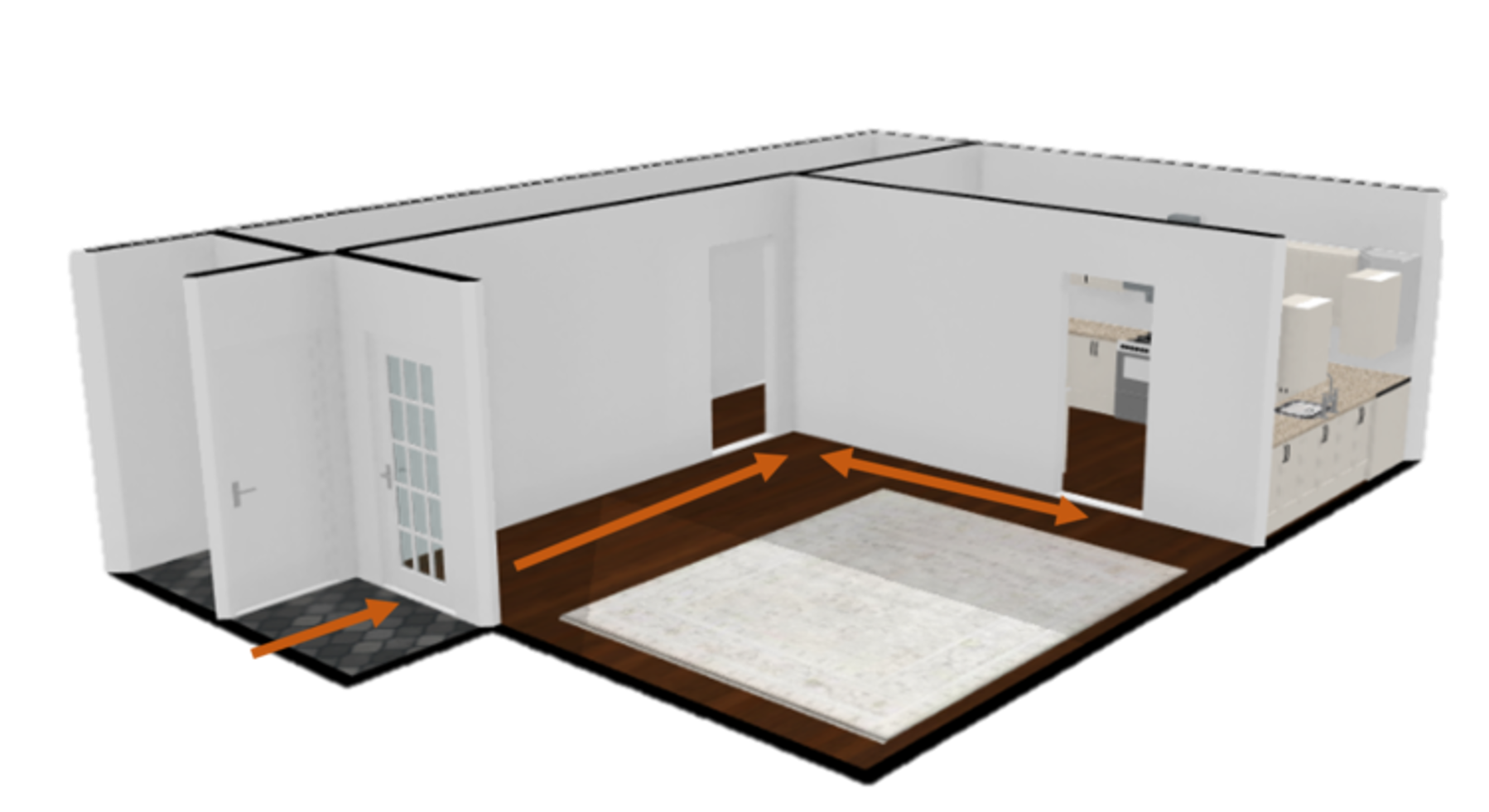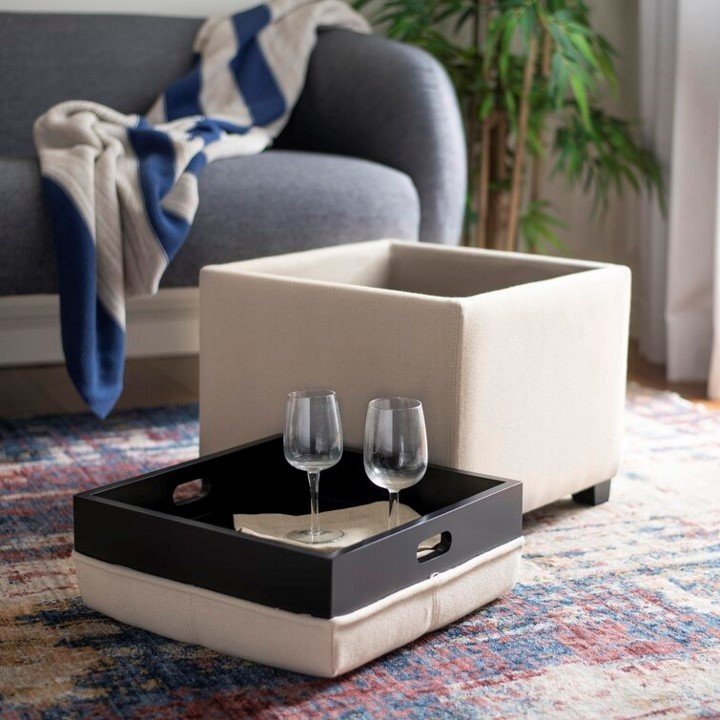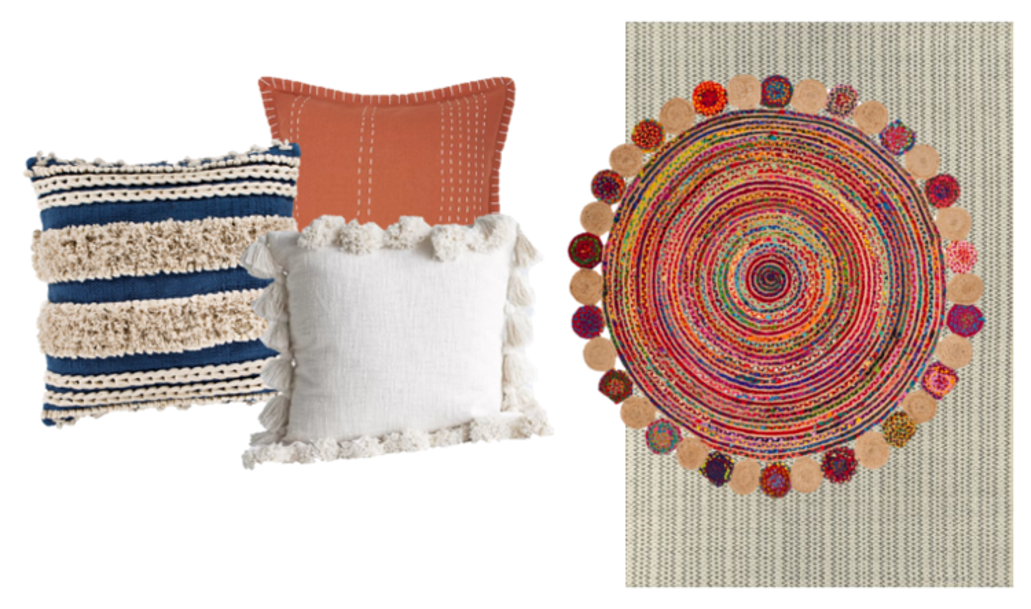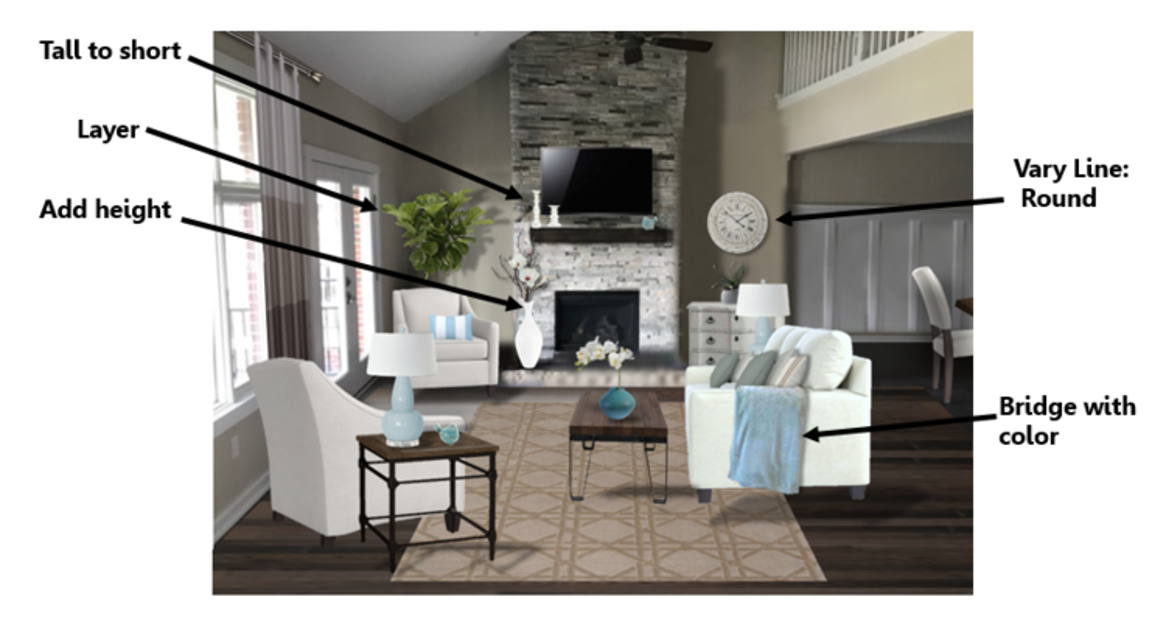Welcome to the world of small living room makeovers, where every inch counts and creativity thrives.
In this blog post, I’ll be talking about the ten most important steps you should take when beginning a journey to revitalize your small rooms.
Are these the ONLY 10 things to think about? Um, No. These are not the only things... But they are pretty big considerations, IMO.
You must start someplace and who doesn’t like a 10-step process, especially if it can get solid results, right?
By following these steps, you’ll discover how to maximize functionality, enhance aesthetics, and create a harmonious oasis that reflects your unique personality.
Let’s get into 10 essential steps for planning a small living room makeover.
1: Define Your Vision
Like any successful design project, a small living room makeover begins with a clear vision.
Michael Helwig Interiors
Take some time to think about how you want your space to look, feel, and function.
Consider the overall ambiance, color schemes, furniture styles, and the mood you wish to evoke.
A well-defined vision acts as the guiding light throughout the entire process.
I love to put together mood boards that capture the essence of a makeover.
You can use programs on your computer like PowerPoint to put a mood board together. Or, go analog with poster board, scissors, magazine pictures and glue.
The important part is to work on your creation until you find that your vision and the feel you want start to click through the pictures.
2: Assess Your Space
Before diving into the implementation process, carefully analyze the dimensions and layout of your living room.
Michael Helwig Interiors
Take measurements, note architectural details, and identify any structural limitations.
This critical evaluation will help you determine the most efficient use of space and enable you to make informed decisions when selecting furniture and decor.
I can’t stress the importance of measuring your room enough. It is literally the one thing that will make or break your vision for your space.
3: Optimize Layout
Efficient space planning is crucial in a small living room.
Experiment with various furniture arrangements, considering traffic flow and maximizing available square footage.
Michael Helwig Interiors
Tip: As you “mood board” your ideal room, include the dimensions of the furniture you wish to include.
It’s important to keep in mind that you only have limited space in your room, so when you compare the dimensions of the furniture to the actual square footage of your room, you’ll know for sure if things will fit.
Also, plan on creating designated areas for different activities, like conversation, entertainment, and relaxation.
4: Embrace Light and Color
To make your small living room feel more spacious and inviting, choose a color palette that reflects natural light and enhances the ambiance.
Go for light and neutral shades: creamy whites, soft beiges, or pastel tones.
Michael Helwig Interiors
I often incorporate pops of vibrant colors through accessories and artwork to add personality and visual interest to the spaces I design.
5: Clever Storage Solutions
Efficient storage is a crucial element when dealing with limited space.
Look for multifunctional furniture pieces, like ottomans with hidden storage or floating shelves, to maximize storage options without sacrificing style.
Embrace smart organizational solutions to keep clutter at bay, maintaining a clean and tidy environment.
6: Scale and Proportion
Oversized pieces can overwhelm a small living room, while undersized items may make the space feel disjointed.
Pick furniture that’s proportional to the room's dimensions and consider sleek, streamlined designs that create an illusion of spaciousness.
Wayfair
I often recommend furniture with exposed legs to give the impression of more space in many of my floor plans. When you can see the floor and the wall behind furniture pieces, it creates a feeling of a larger room. It’s an optical illusion, but every bit helps.
7: Illuminating Ambience
Lighting plays a pivotal role in enhancing the ambiance of your living room.
Incorporate a combination of natural light, overhead lighting, task lighting, and ambient lighting to create a layered effect.
Use wall sconces, floor lamps, and table lamps strategically to highlight architectural features, illuminate reading nooks, and add warmth and depth to the space.
Lighting is often one of the last things folks think about in a room design. I say, you should think about it early in the planning process.
Lamps can bring in texture, color, dimension, shape, reflection, and scale.
All these are important when planning out your room makeover – so don’t phone in the selection of your lighting.
8: Reflective Surfaces
Mirrors and other reflective surfaces are fantastic tools for expanding the visual space in a small living room.
Place mirrors strategically to bounce light around the room and create the illusion of depth.
Tip: Try placing a mirror on the perpendicular wall to the window that gets the most prolonged natural daylight. That will help you reflect the light efficiently around the room throughout the day.
InteriorForLife
Consider incorporating mirrored furniture or glass tabletops to add a touch of glamour and enhance the overall sense of openness.
9: Textures and Patterns
Mix and match different textures, like plush velvet, soft linen, or woven fabrics, to add dimension and tactile interest to your small living room.
Wayfair, Target
Incorporate patterns strategically with accent pillows, rugs, or wallpaper.
Consider geometric patterns, botanical motifs, or subtle stripes to infuse personality and visual excitement into the space while maintaining a cohesive look.
10: Thoughtful Accessories and Finishing Touches
Select decor items that complement your chosen color palette and reflect your personal style.
Incorporate art pieces, sculptural elements, and curated collections to showcase your individuality.
Keep your styling interesting by varying the height and lines of your décor.
That means DON’T keep all your décor the same size shape, height and color. Mix things up!
Michael Helwig Interiors
Layer objects to create depth and experiment with things that would seemingly not go together. You might just surprise yourself with a great look you didn’t expect to have!
It's the small details that truly elevate a room's design.
Congratulations! You have now journeyed through the ten essential steps for planning a small living room makeover.
By defining your vision, optimizing layout, embracing light and color, incorporating clever storage solutions, considering scale and proportion, utilizing strategic lighting, integrating reflective surfaces, exploring textures and patterns, and adding thoughtful accessories, you can transform your compact living room into a stunning oasis that perfectly balances style and functionality.
Embrace the process, enjoy the journey, and get dialed in to the remarkable transformation of your space.
Happy decorating!
Read Next:
Go Big. Go Bold. Be Beautifully Maximalist In Your Small Home!
Embrace the Maximalist Lifestyle: Unleash your creativity with bold designs, vibrant interiors, and eclectic elements. This curated guide has inspiration, tips, and small space solutions for a maximalist haven that reflects your personality. Dive into the world of maximalism today and transform your home into a vibrant masterpiece!
Join the Fun!
If you enjoyed this post and you want to keep seeing my weekly blog, the best way to do that is to subscribe.
You can subscribe by downloading my 11 Secrets Only Designers Know to Make Your Space Rock. If you’re curious about how decorators and designers make a home look magazine ready, you’ll love taking a gander at these 11 secrets. You’ll learn how to style your room from the floor up and it will work for ANY space you have.
I write about small space design and decorating, sustainable furniture options, positive self care and a variety of do-it-yourself home décor.
I’d love to connect with you!
“Michael Helwig was top-notch, very professional and responsive to my needs. He allowed me time to explore ideas and try out a variety of combinations until we found the perfect fit. Michael provided detailed information and offered beautiful ideas to make my dream living room become a reality. The furniture he sourced has totally transformed my living room space. Everyone that has seen my new living room has one word, WOW! A special thank you to Michael for a wonderful experience.”
“Michael was very knowledgeable and guided us, with great patience and good humor, through the process of designing our dining room and helping us find the perfect sleeper sofa. He offered really helpful advice when we asked questions - which was often - but at no time did we ever feel pushed. He helped me when I felt like I couldn’t make one more decision. When my new furniture finally arrived I realized everything down to the pillows was perfect. I couldn’t be happier!”
Max Rahubovskiy
Michael is Principal designer and blogger at Michael Helwig Interiors in beautiful Buffalo, New York. Since 2011, he’s a space planning expert, offering online interior e-design services for folks living in small homes, or for those with awkward and tricky layouts. He’s a frequent expert contributor to many National media publications and news outlets on topics related to decorating, interior design, diy projects, and more. Michael happily shares his experience to help folks avoid expensive mistakes and decorating disappointments. You can follow him on Pinterest, Instagram and Facebook @interiorsmh.



















